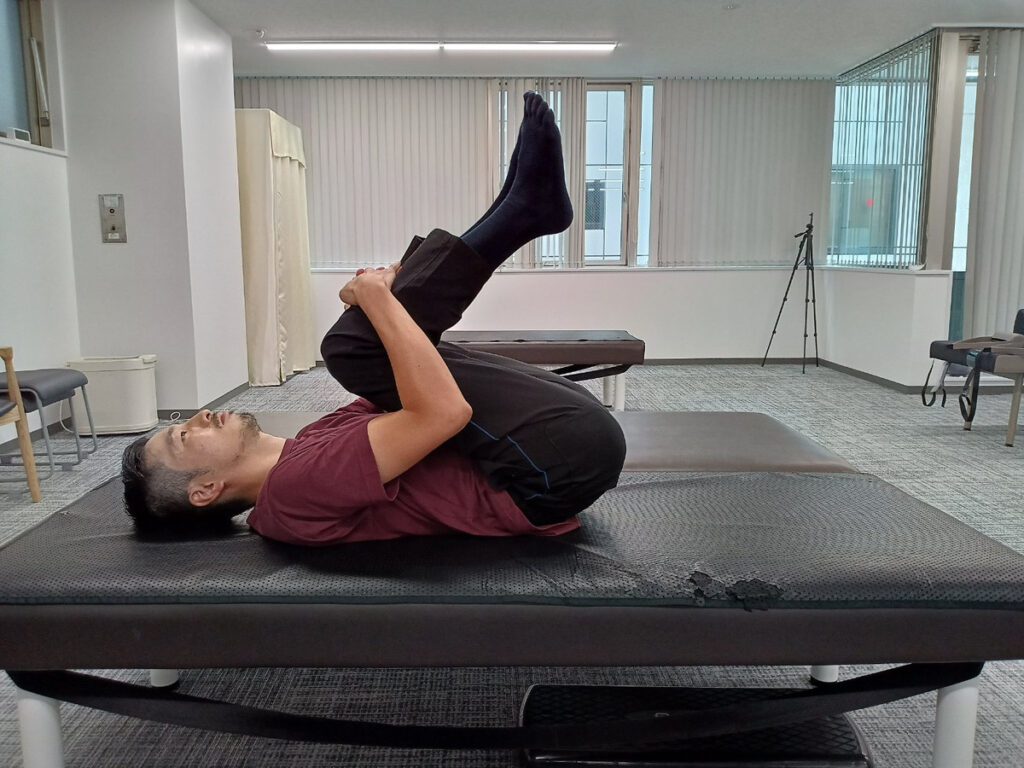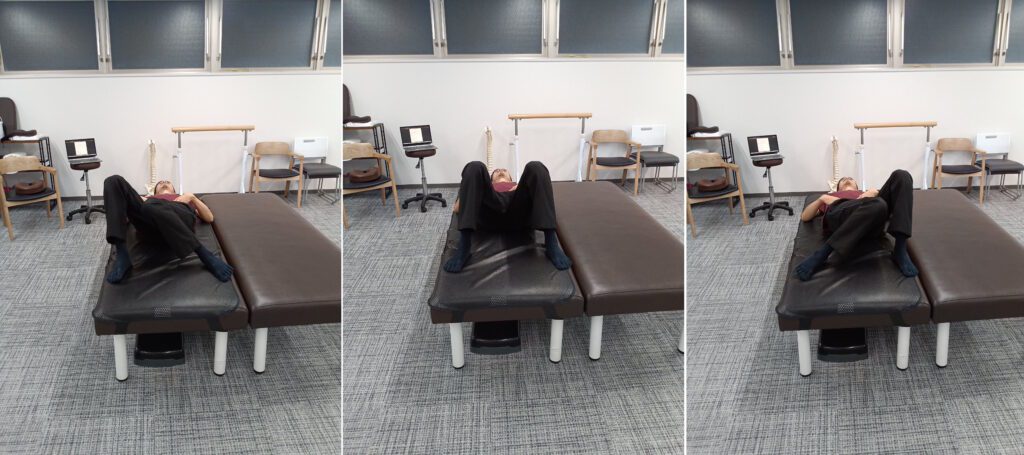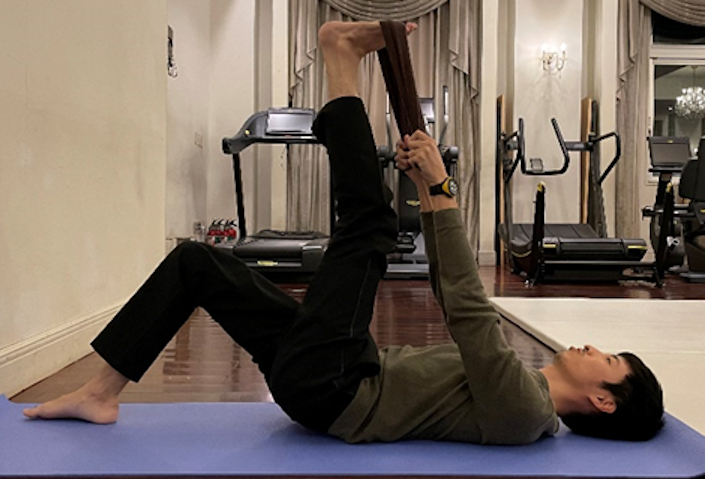Column Tips to Prevent Disc herniation: What Causes the Symptoms and How to Improve Them
May 17, 2024
Intervertebral disc herniation is a well-known spinal disease. When a lumbar disc herniation develops, symptoms such as lower back pain, buttock pain, pain and numbness in the legs occur, which can affect your daily life.
This time, we will explain the causes and remedies for the symptoms of a herniated disc.
What is a herniated disc?
An intervertebral disc is made up of nucleus pulposus (the jelly like substance that makes up the middle of the disc) and the tissue surrounding it is called the annulus fibrosus.
Genetic factors, aging, and the stress of daily life can cause cracks in the annulus fibrosus, causing the nucleus pulposus to protrude and damage the intervertebral disc. This is what is commonly called a herniated disc. When a disc in the lower back becomes herniated, it is called a lumbar disc herniation.
What causes the symptoms of a herniated disc?
In the case of a herniated disc in the lumbar region, symptoms include pain in the lower back and buttocks, and pain and numbness in the legs.
However, even though a severe hernia has been diagnosed by an MRI scan, there may be no pain, or even a mild hernia may cause severe pain.
Symptoms caused by a herniated disc are not caused by physical nerve compression caused by the prolapsed nucleus pulposus, but by inflammation caused by the freshly prolapsed nucleus pulposus.
The inflammation will disappear spontaneously in a few months. The hernia area may spontaneously resorb after inflammation, or it may remain. Even if a residual hernia appears as a severe hernia on an imaging test, there are no symptoms as it is post-inflammation.

Measures to prevent disc herniation
Avoid work that puts strain on the lower
back
To avoid lumbar disc herniation, it is important to avoid work that puts a strain on the lower back. Especially avoid work that requires you to bend over or lift heavy objects and that puts a lot of strain on the lower back. If it can’t be avoided, it may be a good idea to start wearing a corset.
Correct your posture
If you spend a lot of time sitting down at a desk, try to avoid slouching with your back hunched, leaning back against the back of your chair, or crossing your legs with one leg on top of the other. Adjust the height of your chair so that your knees are bent, and your feet stay on the floor, and adjust the position of your computer monitor so that it is in front of your field of vision.
It is also important to periodically stand up and walk around when working at a desk for long periods of time to refresh your posture.
Stretching
Training the muscles around your waist and legs can also be an effective measure.
Try performing the stretches introduced here without overdoing it.
〇 Stretching while holding both your knees
This stretch helps you to maintain a posture that doesn’t cause your back to arch too much and helps to stretch the muscles that support your spine and buttocks.
1. Lie on your back and hold both knees with both hands.
2. While exhaling, hold your knees and bring them to your chest for 10 seconds.
3. When pulling the knees towards your chest, try to lift your hips off the floor as much as possible.

〇 Stretching to twist the waist
This stretch improves movement around the waist and helps correct the bad habit of rounding one’s back. It also improves the elasticity of the muscles supporting the spine and the muscles of the lower limbs.
1. Lie on your back and slightly spread your legs.
2. Keeping your buttocks on the floor, bring your right leg over to the left side.
3. Hold the position for 10 seconds while exhaling.
4. Do the same with the left leg, holding the position for 10 seconds.

〇 Stretching one’s thighs
This stretch improves movement around the waist, corrects the bad habit of rounding one’s back, and improves the elasticity of the muscles in the back of the thighs and calves.
1. Lie on your back, raise both knees, and open them slightly.
2. Hold a hand towel with both hands and pass it behind the soles of your right feet.
3. While still lying on your back, stretch the foot with the towel towards the ceiling.
4. Hold the position for 10 seconds while exhaling.
Repeat the same movement for the left foot.

〇 Stretching the back of one’s thighs
This stretch will help to stretch the muscles on the back of the thighs and prevent the lower back from becoming too strained.
1. Squat down from a standing position and hold both ankles with both hands.
2. Straighten both knees while keeping your chest and front of your thighs close.
3. Hold the position for 10 seconds while exhaling.
Be careful not to let your chest and thighs grow too far from each other. If straightening your knees completely is too difficult, try bending them slightly.

The Cellgel Method: a fundamental treatment
for disc herniation
The measures mentioned above are effective for preventing the aggravation or recurrence of herniated discs, but if disc herniation has already developed, symptoms may reappear at some point. If you have been diagnosed with a herniated disc, we recommend that you consider getting your disc treated.
To that end, our clinic offers the Cellgel method, a treatment that can repair damaged discs.
At our clinic, the Cellgel method consists in injecting a substance that fills the cracks in the intervertebral disc, and solidifies into a gel-like substance, thus providing a fundamental treatment.
The volume of the intervertebral disc does not decrease, and after treatment, the substance remains in the intervertebral disc as a gel-like implant, so it is a fundamental treatment that preserves the intervertebral disc.
If you have been diagnosed with a herniated disc and are suffering from back pain, please consider a consultation at our clinic.
Related Articles
What is a lumbar disc herniation? Causes of pain and symptoms
Let’s understand herniated discs correctly and receive appropriate treatment
Is Disc Herniation for Teens and Young Adults on the rise?
Things You Can do During Work from Home to Prevent Intervertebral Disc Herniation
Recommended training methods to prevent herniated discs
Emergency treatment for the pain and numbness of herniated discs that you can’t stand anymore!



